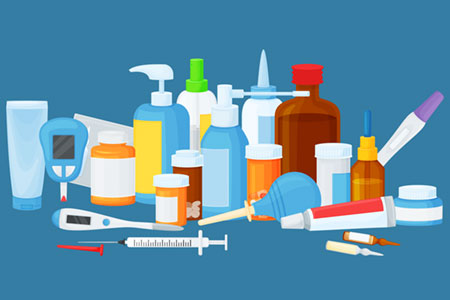June 1st, 2022
The use of plastic molded parts in the medical industry is becoming increasingly popular, and for many good reasons. These molded pieces are disposable and hygienic – often able to meet the exact specifications and regulations needed for many medical applications. Moreover, these components can be manufactured efficiently and cost effectively.
The accuracy required for use in medical devices is critical – the tolerance for error may come down to a micron or a millimeter. This can be an advantage to manufacturers as these parts can be produced with extremely good quality control values even when large quantities are produced. Other benefits for utilizing plastic molded parts include ergonomics, weight, functionality and sterilization.
Examples of Medical Plastic Injection Molding Uses
- Medical facility equipment
- Laboratory items including housings and containers such as beakers and test tubes
- Medical and laboratory device housings
- Medical enclosures
- Needles
- Surgical instruments
- Dental instruments
- Prosthetics
- Orthopedic components
- Implants
- Catheters and IV equipment
That’s just the tip of the iceberg. Medical and laboratory technicians are coming up with new, inventive ways in which to use plastic molding technology in many other areas of the industry.
And why not? The advantages speak for themselves. In addition to those cost-effective and accuracy aspects mentioned above, these plastic components are highly durable and resistant to cracking, shattering and heat. They also can be reused and repeatedly sterilized.
A significant selection of materials is available for medical molding parts even after FDA regulations are taken into consideration. These plastics include polyethylene, polycarbonates, polypropylene and silicone. The proper material should be chosen based on specific applications related to strength, flexibility, sterilization, smoothness, production speed and cost factors.
What to Consider When Assessing Injection Molding for Medical Devices
Given the circumstances, the planning, design, and manufacturing stages for use of plastic moldings in medical parts are the most crucial aspects of the procedure.
- FDA regulations and ISO certification – Medical molding and associated maintenance require strict practice for compliance as it relates to the manufacture, the parts themselves and the maintenance of the equipment. A facility producing these parts must meet ISO 13485:2003 criteria minimally and compliance to Class I, II or III. FDA and ISO compliance is subject to audit.
- Materials for medical components – Must have specific characteristics for these applications
- Sterilization – A minimal requirement for any element is the ability to be sterilized and impervious to contaminants.
- Strength and durability – Parts that break easily or are not resistant to heat, movement, vibration and other exterior forces are obviously poor choices for use in this industry.
Solutions for Medical Molding Maintenance
Slide Products provides NSF-certified products with the best measures available for medical molding applications – from storage to bench to production. Included are formulations for mold releases, mold cleaners, rust preventives and ejector pin grease.
Slide representatives and distributors have years of experience working with products in the medical molding industry. We provide consultation, free samples, and even on-site assessments and training through our Top Tier Service program.




